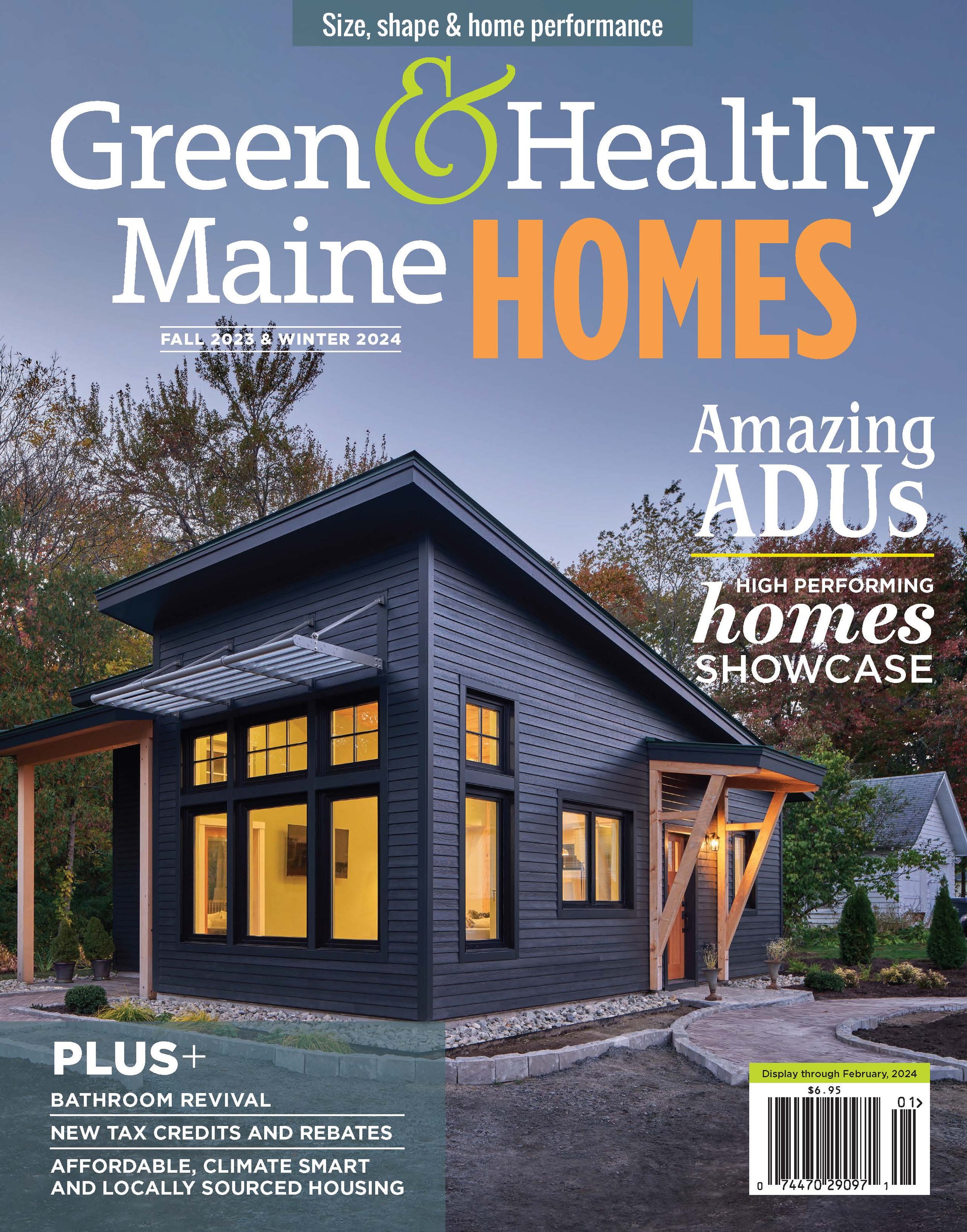Clean and green transformation in Portland
Set on a third of an acre in Portland, this reborn home has kept all of its 19th century architectural charm while also meeting its owners' health and environmental goals. Dubbed "the barn," the small building on the left has ample storage below and a full bath and living space above.
High-Performing maine Home Showcase
By June Donenfeld
Photos: Rhonda Farnham Photography
When Jeanine and Kaitlin went hunting for their forever home in Portland a few years ago, they wanted a house with ample indoor and outdoor space that would enable them to live healthfully and sustainably in the same area near Deering they’d come to know and love. What they didn’t want was to undertake a daunting renovation, knowing that older homes commonly contain toxic materials that could have a negative effect on the development of their two young children at this critical stage of their lives.
With light flooding in through the many wood-framed windows and bouncing off the white walls and hardwood or tiled floors, the newly reconfigured space creates a strong, uplifting connection with the outdoors.
But destiny decreed otherwise. The competition was fierce in the real estate market and pickings were slim, so when they found a large, circa 1890 house with good bones in the right neighborhood on a third of an acre, they knew it was a great opportunity and took the plunge. The other items on their wishlist were a tall order, though, for the home had had virtually no upkeep done on it for more than half a century. The exterior was beautiful, but the interior was ridden with mold, mildew, asbestos and lead paint. The layout also lacked the functionality that the family needed, so significant changes had to be made there, too.
To address all these issues, the project would take time and a lot of hard work. Over the 18 months of renovations, designed by Anne Callender of Whipple | Callender Architects, overseen by general contractor Varsity Development and carried out by a small army of professionals, the house was utterly transformed on the inside while retaining its elegant, classic New England looks on the outside.
The couple’s top priority was to ensure that the home’s indoor air quality was as clean as possible, so they consulted Corinne Segura, building biologist, green building consultant and owner of My Chemical-Free House, on what lation, they had hoped to use wood fiber insulation from TimberHP in Madison, but it was not yet available, so they chose formaldehyde-free ROCKWOOL AFB® evo insulation instead.
The home’s mechanical systems include an ERV system to reduce humidity and ensure that a continual supply of fresh, conditioned air flows into the house while indoor stale air is exhausted outside. For heating and cooling, they invested in a geothermal system, with natural gas for hot water and as heating backup if the temperature drops exceedingly low. And to offset their electrical bills and support greener power production, they subscribe to a community solar project.
As another of Jeanine and Kaitlin’s primary goals was to keep the project’s environmental impact low, they did their best to reduce construction waste. The old trim and doors were donated to Habitat for Humanity’s ReStore, and the old wood flooring and new scraps were given away to area residents; the builders regularly left piles of wood outside for neighbors, some of whom stopped by daily to share in the bounty. It was a long and arduous process, but Jeanine, Kaitlin and their children are now settled happily into their stunning new home—and breathing easy
Project team
General Contractor: Varsity Development LLC
Design: Whipple | Callender Architects
Engineer: Trillium Engineering Group
Builder: Gray Woodworking LLC
Plumbing: Mainely Plumbing & Heating and Redwood Plumbing
Geothermal System: Evergreen Geothermal
Electrical: Hicks Electric
Landscape Design: Little Lion Landscaping
Above: Tall French doors lead to a spacious front porch, perfect for reading, dining or just watching the world go by.
This article appeared in the Fall 2023 edition of Green & Healthy Maine HOMES. Subscribe today!
Find Maine experts that specialize in healthy, efficient homes in the Green Homes Business Directory.





Building a nontoxic environment was the driving force behind every choice made by a mother with debilitating chemical sensitivities.